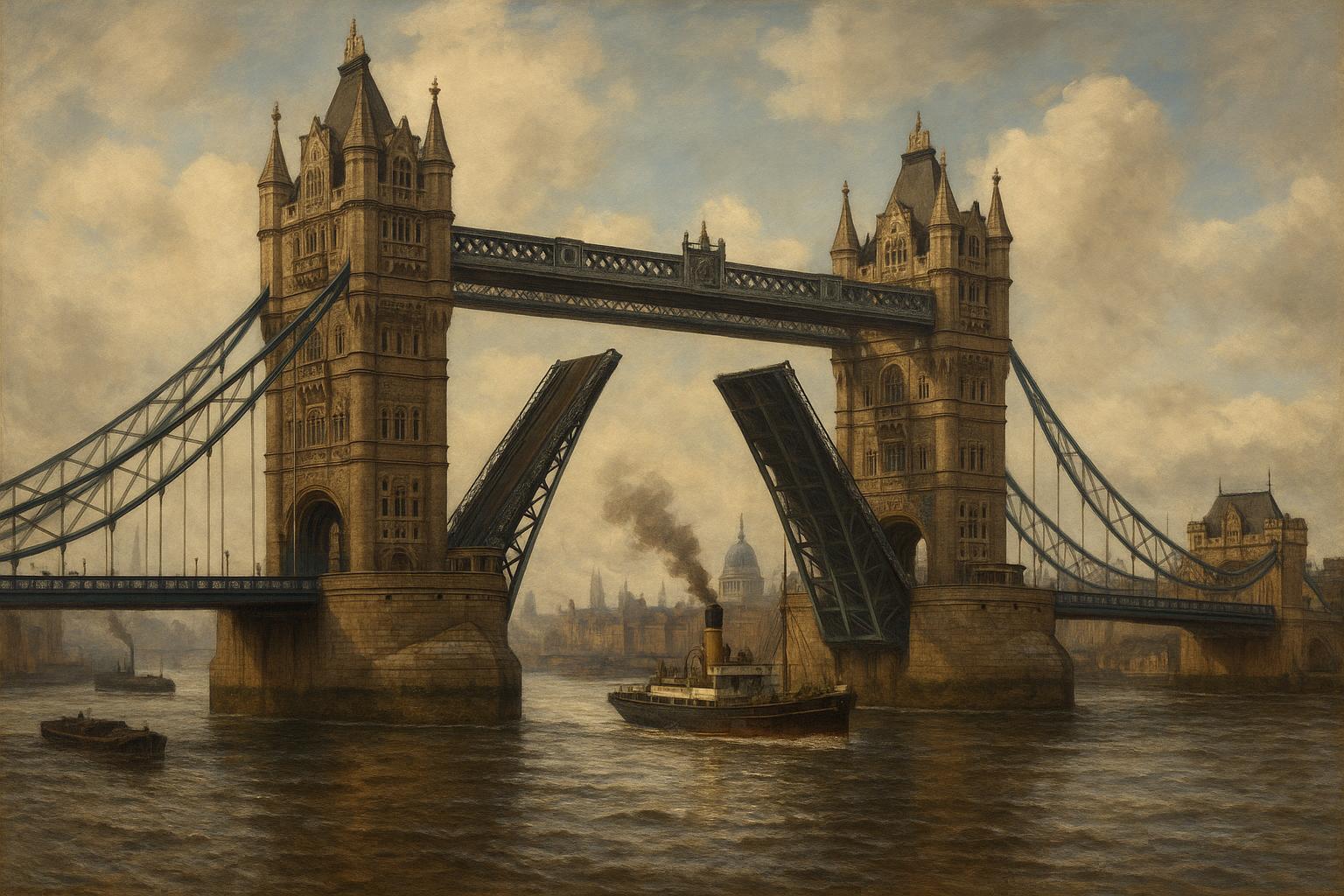Tower Bridge, one of London's most recognisable landmarks, was conceived as a vital infrastructural response to the city's booming commercial trade and expanding population in the 19th century. By the late 1800s, an estimated one million people resided to the east of London Bridge, yet crossing the River Thames remained a significant challenge—pedestrian journeys could take up to two hours, or necessitate a ferry crossing. To address this growing demand, a Special Bridge Committee was established in 1876 to find a suitable solution.
The committee initially launched a public competition that attracted over 50 design submissions. Ultimately, the competition was abandoned in favour of the city architect's design, which was then refined through a collaboration between Sir Horace Jones, the City Architect and Surveyor, and Sir John Wolfe Barry, a leading civil engineer and future Institution of Civil Engineers President. Their joint design was approved by the Bridge House Estates in 1884, setting the stage for the construction phase that would span eight years, from 1886 to 1894.
Sir Horace Jones, already renowned for designing London’s Smithfield and Leadenhall Markets, played a pivotal role in the aesthetics and initial concept of Tower Bridge. Knighted in 1886 and serving as President of the Royal Institute of British Architects, Jones’s tenure was tragically cut short when he passed away in 1887, several years before the bridge’s completion. Responsibility for the project’s engineering execution then largely fell to Sir John Wolfe Barry, whose expertise ensured the successful completion of the groundbreaking structure. Barry, who had a collaborative history with Henry Marc Brunel and was subsequently knighted in 1897, was instrumental not only in the design but also the overcoming of formidable engineering challenges during construction.
The building of Tower Bridge involved innovative techniques and complex logistics, particularly in constructing the foundations deep into the soft bed of the River Thames and erecting the steel framework which supports the towers. The bridge's most distinctive feature, the bascules—moveable sections that lift to allow river traffic to pass—were powered by novel hydraulic engines, a cutting-edge technology of the time. The elaborate stonework façade was crafted to complement the nearby Tower of London, merging engineering prowess with architectural heritage.
Tower Bridge’s creation was a triumph of teamwork, merging civil engineering, architecture, and innovative technology to connect London’s industrial east more seamlessly with the rest of the city. It symbolised progress and the practical response to urban growth pressures, becoming more than just a bridge but a cultural icon. Today, its story reflects the legacy of its creators—Sir Horace Jones’s visionary designs and Sir John Wolfe Barry’s engineering mastery—that continue to inspire and fascinate generations.
📌 Reference Map:
- Paragraph 1 – [1], [5]
- Paragraph 2 – [1], [4], [5]
- Paragraph 3 – [2], [6]
- Paragraph 4 – [3], [7], [4]
- Paragraph 5 – [1], [4], [3]
Source: Noah Wire Services
